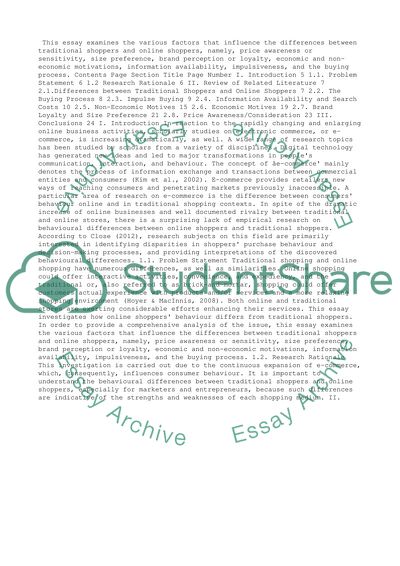Cite this document
(“How does online shoppers' behaviour differ from traditional shoppers Essay”, n.d.)
Retrieved from https://studentshare.org/business/1473158-how-does-online-shoppersyie-behaviour-differ-from
Retrieved from https://studentshare.org/business/1473158-how-does-online-shoppersyie-behaviour-differ-from
(How Does Online shoppers' Behaviour Differ from Traditional Shoppers Essay)
https://studentshare.org/business/1473158-how-does-online-shoppersyie-behaviour-differ-from.
https://studentshare.org/business/1473158-how-does-online-shoppersyie-behaviour-differ-from.
“How Does Online shoppers' Behaviour Differ from Traditional Shoppers Essay”, n.d. https://studentshare.org/business/1473158-how-does-online-shoppersyie-behaviour-differ-from.


